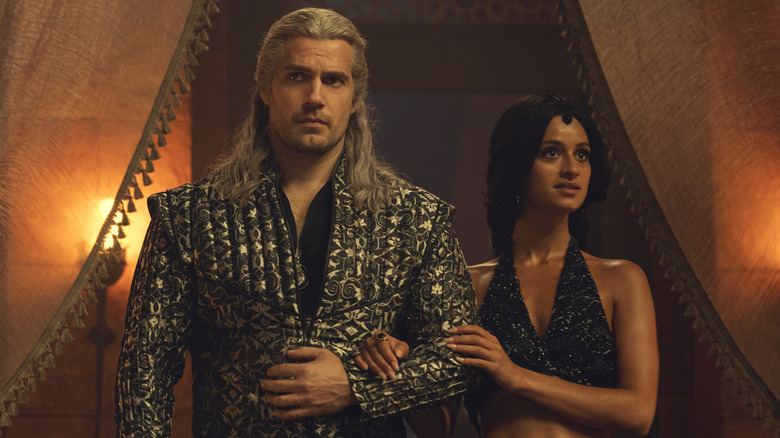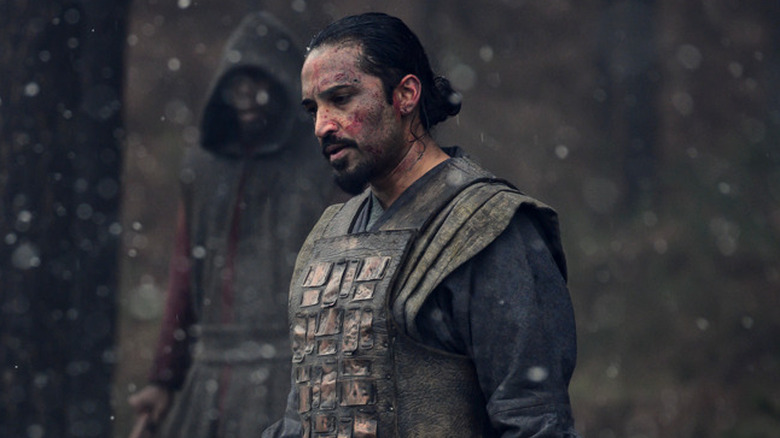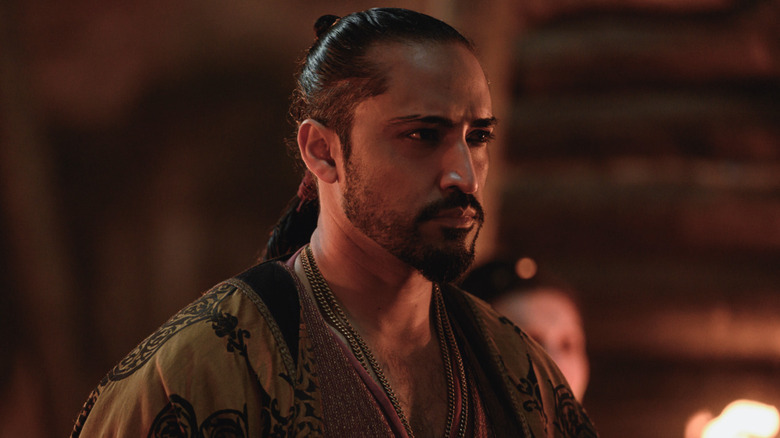The Witcher S3: How Part 1 Dropped The Ball On Hiding Its True Villain
Contains spoilers for "The Witcher" Season 3, Episode 5
After two-and-a-half seasons, Netflix's live-action adaptation of "The Witcher" finally shows Vilgefortz of Roggeveen (Mahesh Jadu) as the villain that fans of Andrzej Sapkowski's novels and CD Projekt Red's games already knew him to be. Except, as dramatic reveals go, "The Witcher" leaves a lot to be desired with this one. The series treats its big twist as if it's been brewing beneath the surface ever since Vilgefortz was introduced in Season 1, Episode 7, but almost every single breadcrumb in the notably brief trail of hints comes from the final episode of Season 3 Volume 1. Which, for those keeping score at home, is not how breadcrumb trails are supposed to work.
In Season 3, Episode 5, titled "The Art of Illusion," Vilgefortz delivers a suspicious speech to Geralt of Rivia (Henry Cavill) about the battles to come, during which he attempts to persuade the Witcher to ally himself with a larger cause — specifically, Vilgefortz's cause. He also casually mentions his fondness for a certain painting at Aretuza, which just so happens to depict the exact location where Yennefer of Vengerberg (Anya Chalotra) went when her portal was hijacked in Season 3, Episode 4 ("The Invitation").
The Witcher hid its clues too well
Credit where credit is due, "The Witcher" permits two important, intertwined clues to leak prior to the episode in which Vilgefortz's true intentions are made clear. There are a few mentions of Lydia van Bredevoort (Aisha Fabienne Ross), the silent mage who uses telepathy to impart her master's instructions. And Season 3 Volume 1 also focuses on the necklace which Vilgefortz gives to Tissaia as a token of his affection. The two seemingly disparate dots are connected by scarlet ammonite, a material only found in West Redania. Both Tissaia's necklace and a set of earrings that Lydia wore in Season 2 are made of it.
But there's more to this line of thinking than matching jewelry. West Redania is also where Geralt finds and rescues Teryn (Frances Pooley), the only survivor from a string of heinous experiments that attempted to transform innocent women into Princess Cirilla of Cintra (Freya Allan). And Teryn recalls hearing a "funny" voiced woman during her time imprisoned — the same description others have used to explain the quality of Lydia's telepathic speech. See? It all ties together... in a roundabout sort of way.
The Witcher's showrunner intentionally kept audiences in the dark
The strange thing about "The Witcher" burying its narrative breadcrumbs so thoroughly is that, again, fans of the books and the games already know that Vilgefortz is a bad guy. It's not exactly a well-kept secret. And neither are the books or the games. Netflix might arguably reach a broader audience than the reading and gaming communities combined, but that doesn't mean that either of these communities is small. And the internet amplifies everything. All it takes is for one non-reading, non-gaming fan of "The Witcher" to read literally any article similar to this one, and the element of surprise is destroyed.
And to clear the air, "The Witcher" buried its hints intentionally. This isn't a situation where the writers forgot how to roll out exposition. In 2021, Lauren Schmidt Hissrich, the showrunner of Netflix's adaptation of "The Witcher," admitted to cutting a scene from Season 2 in which more of Vilgefortz's history was revealed. Apparently, it was too soon for the streaming-exclusive audience to start forming its own ideas about where the story was heading.
"The Witcher" features a number of bad guys, so it's not like Season 3 was lacking much without more Vilgefortz. It's only that such a crucial aspect of the story deserved a better build-up, even if it only spanned across a few more episodes of Season 3 Volume 1.


